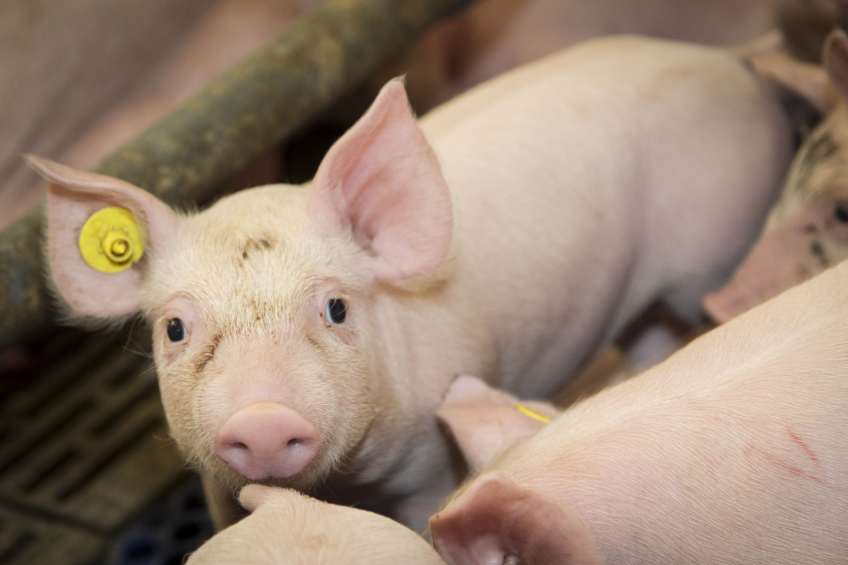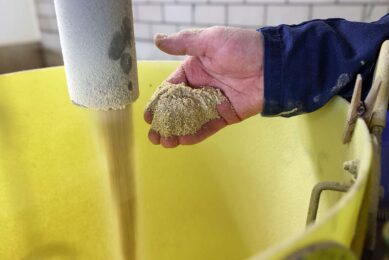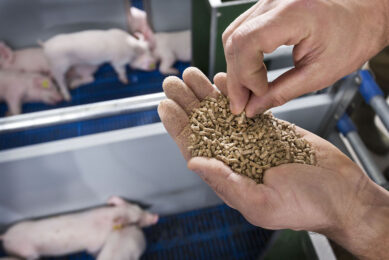Which wheat particle size is best for grower pigs?

Wheat particle size between 430 to 470 µm has been found to be most acceptable in growing pig diets.
The research, carried out by scientists from the Huazhong Agricultural University in Wuhan, China and from New Hope Liuhe Feed, Qingdao, China, found that a quadratic effect of the particle size and average daily gain was observed, with the greatest average daily gain occurring with 430-470 μm.
In addition, the increase in the particle size of wheat from 430 to 470 μm increased the number of beneficial bacteria (Bifidobacterium species and Lactobacillus species), but also suppressed bacterial pathogens (Eschericha coli), which effectively promoted the diversity of gut microflora.
Effect of particle size on digestibility
The researchers write that the research was conducted to determine the effect of particle size of wheat on digestibility (in vitro and in vivo), growth performance, and gut microbiota in growing pigs. The pigs were fed wheat-soybean meal-based diets containing 70.85% wheat ground to mean particle sizes of various sizes, being:
- 330 μm;
- 430 μm;
- 450 μm;
- 470 μm;
- 580 μm; and
- 670 μm.
Before being blended into diet, the ground wheat were used to measure dry matter and crude protein in vitro digestibility by the two-step method (pepsin and trypsin). Then, a total of 30 barrows with an average bodyweight of on average 21.2 kg were fed 6 diets containing different particle sizes of wheat (330, 430, 450, 470, 580, and 670 μm) to determine apparent digestibility of dry matter, gross energy, and nitrogen in vivo.
Finally, the effect of the particle size of wheat on growth performance and microbiota was assessed by feeding the same diets for 28 days with 6 pens per diet and 10 pigs (initial bodyweight on average 10.4 kg) per pen.
Results of the digestibility trials
Reducing the particle size from 670 to 330 μm increased the dry matter digestibility from 17% to 26% and crude protein digestibility from 55% to 66%. The digestibility experiment in growing pigs demonstrated that particle size exerted no effect on dry matter and gross energy digestibility in vivo.
In contrast with in vitro digestibility, as the particle size of wheat reduced, apparent nitrogen (protein) in vivo digestibility increased first and then decreased, with the particle size of 430 μm supporting the greatest nitrogen digestibility.
Average daily feed intake (ADFI) and gain/feed were unaffected by particle sizes. However, the diarrhoea incidence increased with the particle size reduced.
Names of the researchers are Z. Bao, J. Zhang, L. Li, P. Zhang and F.R. Huang from the Huazhong Agricultural University and Y. Li from New Hope Liuhe Feed.
 Beheer
Beheer








 WP Admin
WP Admin  Bewerk bericht
Bewerk bericht